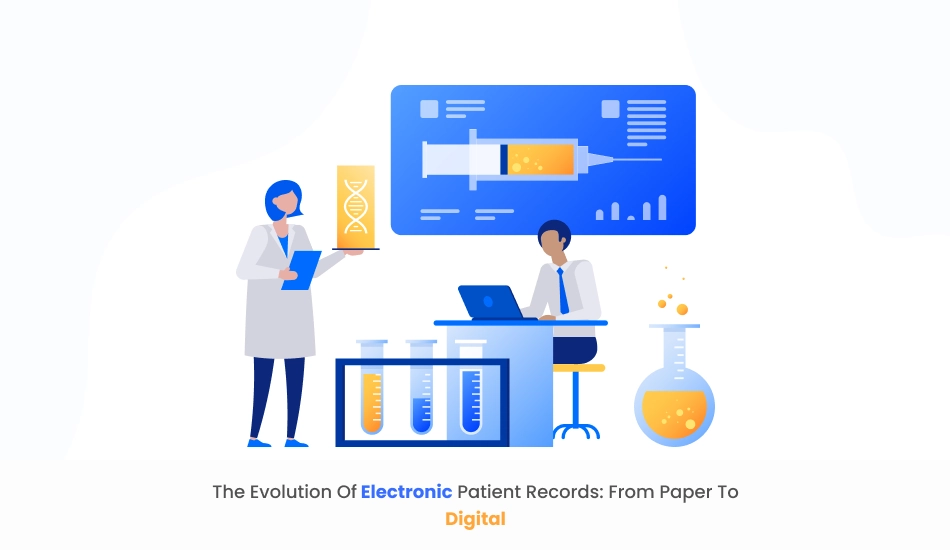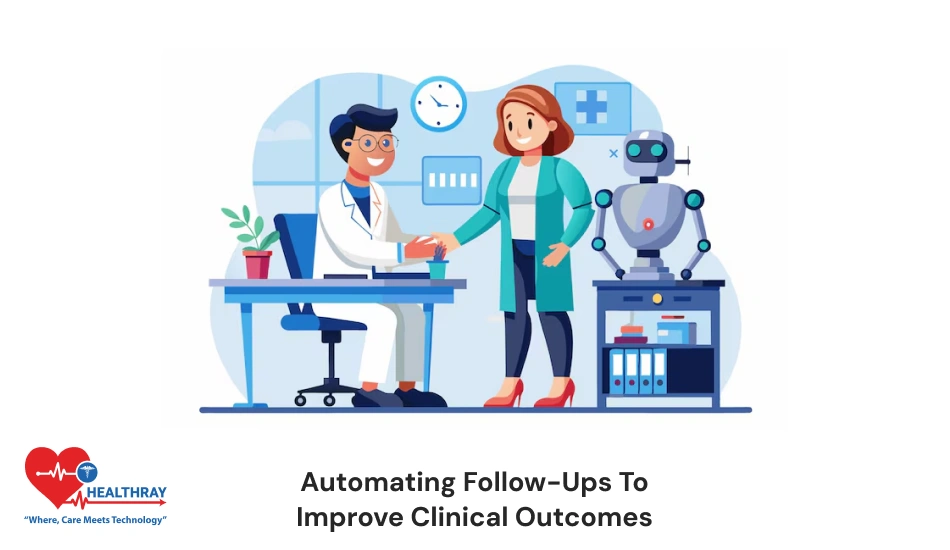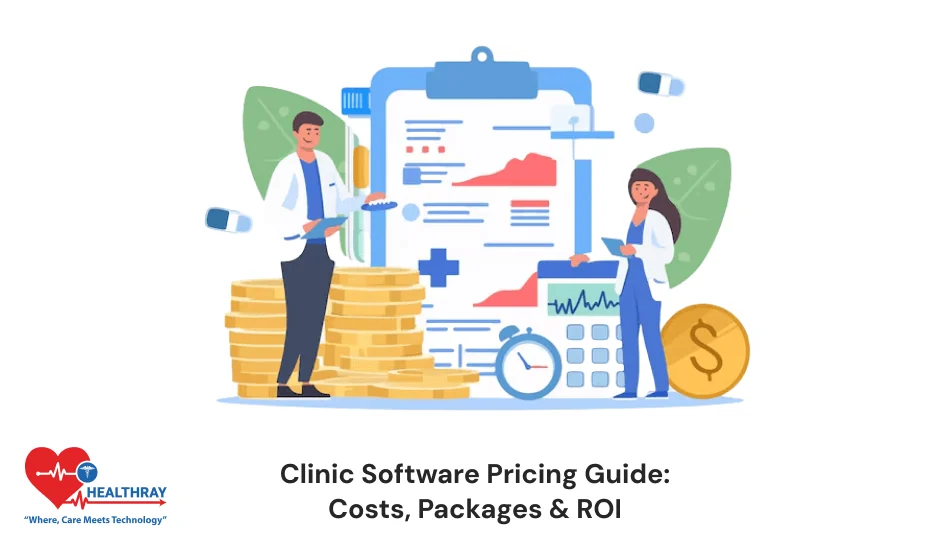Quick Summary
Transitioning from paper to electronic medical records brings revolutionary change in the entire healthcare system as it affects all medical departments. Before the 1960s, there was extensive use of paper and cabinets. Moreover, in the mid-1960s – 1970s, medical staff used computers for record keeping but it was difficult to complete the replacement of the paper records system. In the 1980s, it introduced EHR systems for recording Electronic Patient Records, a strong alternative to paper records. However, they faced several healthcare challenges. Still, there was some technological advancement in the EHR systems.
Introduction

Electronic patient records have a profound history. Also, they have a challenging path to becoming independent systems and complete cessation of paper records. Paper record systems had been more prevalent in the 1960’s. At that time, electronic records were beyond the imagination of individuals.
After that, The research professors of Regenstrief Institute in Indiana introduced software. Furthermore, it supports patient record-keeping and efficiently maintains hospital data. Still, healthcare professionals were facing a lot of medical obstacles.
After 2009, there was a progression in the existing Electronic Medical Record in healthcare. Afterward, there was some technological advancement in the healthcare software systems. In the present era, electronic health records are widely accepted in healthcare organizations and it simplifies the maintenance of electronic patient records.
What is the History of Electronic Patient Records?
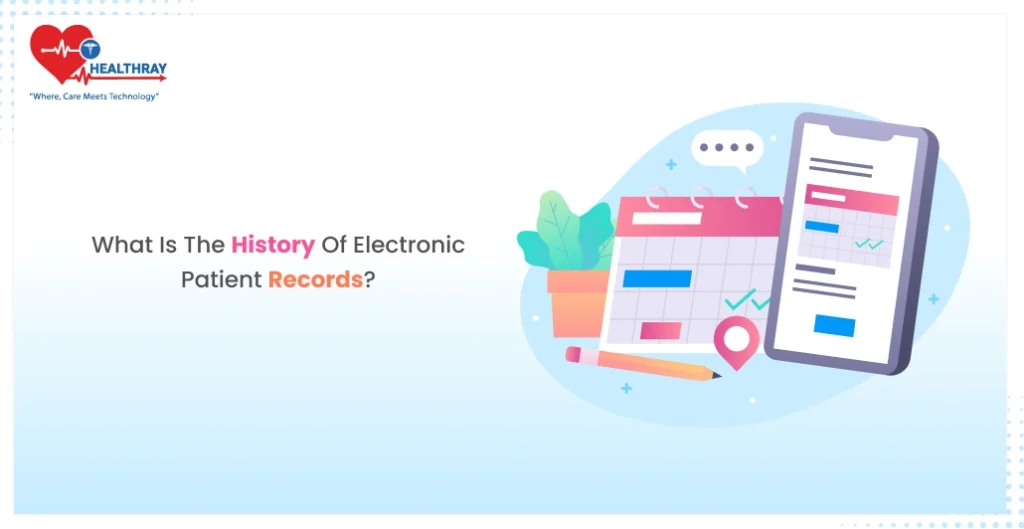
Maintaining records in digital format has been a challenging task since ancient times. The main challenges are hard to store medical records for a long time, difficulty in providing access to healthcare records, and troublesome in finding any medical information.
In the 1970s, an innovation came into the picture, the Regenstrief Medical Record System (RMRS) which is now called an electronic medical record (EMR/EHR) system. Moreover, healthcare organizations have been using the Regenstrief Medical Record System for storing, organizing, and retrieving patient data.
During the 1990s, some modifications were made by the Institute of Medicine (IOM), leading to enhanced patient care and reduced medical expenses.
In 2009, the United States government took several steps such as formulating the rules for the widespread adoption of electronic health records in the hospital. The United States government provided a fiscal reward for implementing this software.
In the present era, mostly electronic patient records software are AI-based applications that not only simplify the hospital work. But, it also supports generating hospital revenue.
Top 5 reasons Digital Records Prevail Over Paper Records
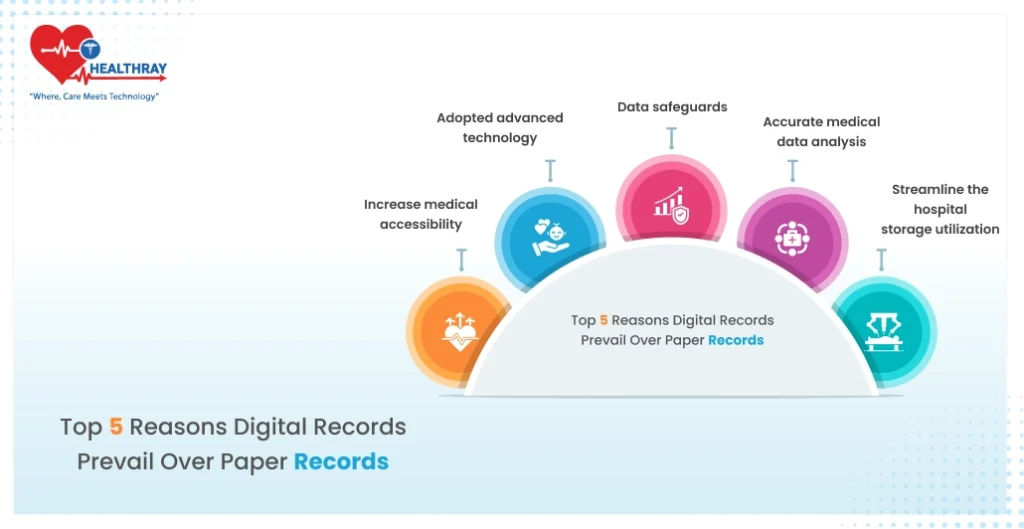
Digitalization has vast potency to record large medical sets and properly organize data which is difficult with paper records systems. Not only digital records functionality is limited to this, but more of that. Furthermore, it creates proper discipline in hospitals and helps in efficiently managing all hospital departments. Let’s discuss on top 5 reasons for triumphing digital records over paper records :
Increase medical accessibility :
The major advantage of transitioning from paper to electronic medical records is to simplify the process of sharing medical information with other health care providers. With electronic health records, healthcare providers and patients can view and analyze medical information from any remote location. Here are some benefits of medical accessibility :
- Eliminates patient dwelling time in standing queues for hours
- Facilitate remote clinical practice
- Minimizes the patient visit requirement. Thereby, it lowers patient expenses
- Patients can make proactive medical decisions.
- Improves medical disparities. Consequently, it improves a healthier environment.
Adopted advanced technology :
In this fast-paced scenario, it is crucial to adopt advanced healthcare technology like Healthray’s electronic health records software. Moreover, there are countless perks. Here are certain benefits:
- Tremendously enhances health outcomes
- Supports proper electronic documentation
- Reduces the risk of missing records
- Better patient’s treatment planning
- Maintains entire hospital resources efficiently.
Data safeguards :
Digital records come with the utmost advantage of securing the medical data which might be impossible with a patient record system. Moreover, it minimizes many of the medical risks such as :
- Mitigating the cyber security risks
- Reduces the legal risks
- Eliminate the forgery risks of medical documentation
- Eradicate mismanagement of hospital finance
- Minimizes Patient Safety risks
Step towards digital era with our healthcare solution
Revamp your hospital facilities and embrace change for better healthcare management. Ease in managing and organizing large medical datasets leads to effective analysis. Seize the opportunity now!
Accurate medical data analysis :
Numerous types of healthcare analytics such as predictive analysis, descriptive analysis, and medical discovery analysis. Further, these analyses are necessary for improving the efficiency of healthcare organizations. There is a vast importance of medical data analysis, let’s look closer at some of them :
- Eliminate medical costs
- Increases health outcomes
- Enhances healthier ecosystem
- Timely preventive measures
- Improves patient safety
Streamline the hospital storage utilization :
Hospitals need a huge storage space for maintaining and securing physical documents. Moreover, it incurs lots of hospital costs. Healthray’s EPR Software records a large amount of patient data effortlessly and secures individual data by applying security measures. Let’s understand the several advantages of utilizing hospital storage :
- Hospital inventory is placed in the right space
- Increasing accessibility of medical equipment
- Decreases a lot of medical expenses incurred on creating storage space
- Reduces nurse’s efforts and saves medical staff time
- Supports in managing healthcare inventory.
The Major Healthcare Challenges in the Ancient Period are Addressed By Electronic Medical Record Systems

There are many healthcare challenges posed in ancient times. Health information technology overcomes numerous medical obstacles. Furthermore, these obstacles lead to increased healthcare expenses and reduce patient’s faith. Also, it is difficult to manage clinical data as hospitals grow. Explore certain healthcare challenges faced in the ancient period, which are now addressed by electronic medical records systems.
Difficulties in record management :
As hospitals grow, the volume of hospital and patient data also increases. Furthermore, the records include patient information, progress notes, laboratory test results, inventory data, laboratory data, and healthcare financial data.
On the other hand, EMR software maintains up-to-date patient data. Similarly, records of medical data are updated continuously. Ultimately, improves health care delivery, contributes towards public health, and increases medical care.
Hospital financial constraints :
The predominant factor is managing healthcare finances. Otherwise, it is difficult to make any financial decisions and stagnant hospital infrastructure growth.
In contrast, This health system provides an electronic mode of billing which increases the speed of financial transactions, malpractice claims, and overall decreases administrative costs.
Communication restraint :
Open communication is the key to improving health care services. Formerly, healthcare professionals didn’t listen to patients carefully due to time constraints. Consequently, it leads to wrong treatment and increases the patient’s safety risks.
On the contrary, EHR systems support hospital managers in managing the activities of decentralized staff. Additionally, patients can communicate with diverse medical specialists and contribute to enhancing their medical experience.
High Administrative Costs :
Formerly, entire healthcare transactions were recorded on paper which is too troublesome and time-consuming. Moreover, the administrative department handles core medical activities such as patient registration, billing, and manual appointment booking, and manages insurance processes.
On the other hand, the EHR system handles all administrative tasks efficiently. Therefore, It helps in minimizing administrative expenses and improves hospital cash flow.
Why do we need Electronic Patient Records in the Present Era?
Electronic Patient Management have a crucial role in modern healthcare. Moreover, it completely replaces the conventional healthcare system. Furthermore, it has several functionalities such as maintaining centralized patient information and assimilating patient’s medical billing. Also, maintains various patient medical documents such as clinical notes, consultation reports, treatment plans, and discharge summaries.
Nowadays, many hospitals use Healthray, the top-tier electronic medical record software. It has many advantages such as assimilating entire patient information in one place, scheduling appointments remotely, and retrieving any patient’s healthcare data. Also, it helps in formulating a financial medical budget.
Conclusion
In the 1960s, there was a concept of a computerized system. After that, in 1970, an innovation emerged with the name of Regenstrief Medical Record System (RMRS). In 2000, some policies were formulated to encourage the hospital to embrace the electronic health record system. After EHR implementation, simplifying the patient record system. Moreover, patients have their own system of electronic patient records, where patients can schedule online appointments, formulate medical budgets, analyze medical reports, and ease the retrieval of necessary medical documents.
